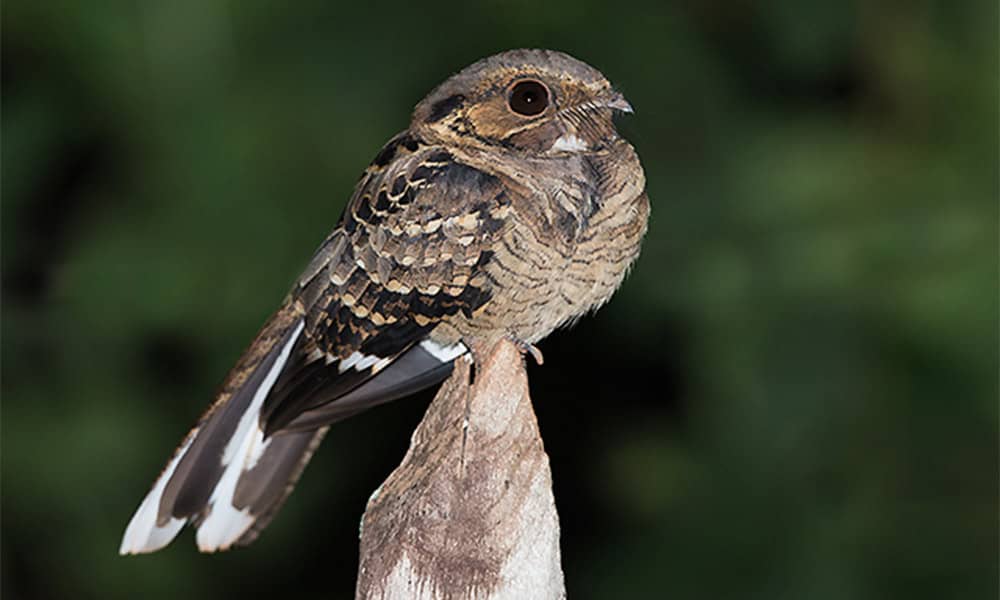Sometimes while working with children in environmental education programming, I’ll have a student comment that one animal or another is bad. I always tell them that no species is either good or bad, they’re all just trying to stay alive and pass on their genes to the next generation. Mosquitos aren’t bad. Sharks aren’t bad. Scorpions aren’t bad. So I guess by extension, common pauraques aren’t bad either. That being said, I don’t like them one bit.
My issues with the common pauraque (Nyctidromus albicollis) begin with the name. The Spanish names, tapacaminos or cuyeo, are perfectly fine. The first name comments on the fact that they often sit on the road at night and the second speaks to the sound of their call. The English name is a nightmare to pronounce.
I recently realized that the pronunciation I’ve been using in my head and never dared to utter out loud due to fear of being incorrect, is indeed, incorrect. The internet claims it’s pow – RAH – kay, with the second syllable being emphasized, but then it goes on to say that the proper pronunciation is unsettled due to uncertain transliteration from Spanish. Nothing helps clear up a confusing topic like throwing a word like transliteration in there.
I also have problems with the way this bird looks. It has a vaguely owl-like head perched on a dove-like body that appears to have no legs connected to it when they’re sitting on the ground. I’m not offended by any of that. The problem arises with their plumage. Describing in writing would be difficult, so let’s just say they’re a combination of black, white, and different shades of brown that would camouflage them nicely amongst the fallen leaves on the forest floor. That exact description would also fit the nine other species of nightjars in Costa Rica. Take a look at the nightjar page in your Costa Rica bird book. Properly identifying the common pauraque amongst its kinfolk is no easy task.
A little about where and how this bird lives. They’re found from southern Texas, throughout Central America, down to Uruguay. They are nocturnal, beginning to move around dusk. They’re insectivorous, feeding on the grand assortment of flying insects in the tropics. Their method of securing their prey is to sit on the ground in an open area or a patch of open space in a forested area and quickly fly up and grab whatever insect happens to fly overhead and then land back in the same spot on the ground. You’ll never believe it, but I also have a big problem with this.
When I place my camera traps in the forest, I am often looking for a small open patch in a wooded area, so I have a nice little zone to record the species that pass by. That means that the common pauraque and I are homing in on the same areas. That also means that my cameras often record common pauraques landing in front of my camera, flying up again to catch a bug, and then returning to the spot in front of my camera over and over and over again.
The result is a million black and white videos of common pauraques flapping around. Or at least birds that I think are common pauraques because they’re so terribly hard to differentiate from other nightjars. I now present to you some camera trap videos of what probably common pauraques are eating bugs. Enjoy.
About the Author
Vincent Losasso, founder of Guanacaste Wildlife Monitoring, is a biologist who works with camera traps throughout Costa Rica.

